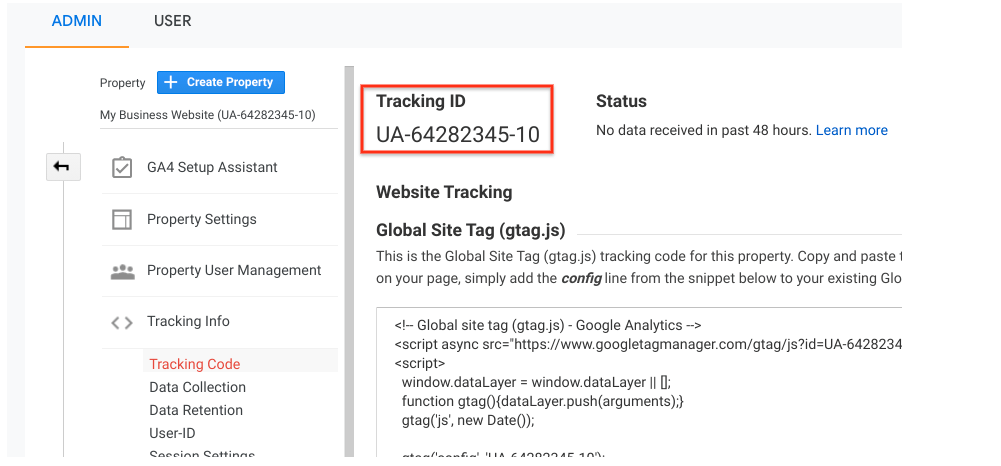Browsing the Intricacies of Information Collection Limitations in Google Analytics: What You Required to Know
In the realm of digital analytics, Google Analytics stands as a foundation tool for organizations to amass insights right into their online performance. However, below its relatively simple interface lie intricacies that can impact the precision and integrity of the information it gives. Comprehending the ins and outs of data collection limitations in Google Analytics is critical for making notified decisions based on the understandings originated from the system. As services aim to take advantage of data for tactical development and efficiency optimization, being mindful of these constraints ends up being not just advantageous but crucial.
Data Discrepancies in Google Analytics
Periodically, data inconsistencies may develop in Google Analytics, necessitating a thorough understanding of the system's complexities to successfully resolve and fix these discrepancies. These disparities can stem from numerous sources, such as implementation problems, data tasting, filters, and even robot traffic. One typical reason for information variances is discrepancies in between information gathered using JavaScript tracking code and data imported from various other resources like Google Ads or Look Console.
To deal with these disparities, it is essential to initial conduct a comprehensive audit of your tracking configuration. Verify that the monitoring code is correctly executed on all web pages, check for any type of filters that could be altering the data, and make certain that there are no redirects or other technical problems conflicting with data collection. Furthermore, acquaint on your own with common challenges, such as cross-domain monitoring mistakes or misconfigured objectives.
Monitoring Obstacles and Solutions
Offered the intricacies of information inconsistencies that can develop in Google Analytics, attending to tracking challenges and implementing effective solutions becomes paramount for making certain exact and trusted data analysis. To overcome this, carrying out individual ID monitoring can assist connect communications throughout different devices under one customer identifier, supplying an extra alternative view of user behavior.
Another monitoring challenge comes from advertisement blockers and personal privacy policies, which can prevent the collection of exact data (What Data Does Google Analytics Prohibit Collecting?). Solutions to this consist of implementing server-side monitoring, which bypasses client-side restrictions, and respecting user privacy preferences by giving clear opt-in systems for information collection

Understanding Tasting in Records
Experiencing in reports provides an approach for assessing huge datasets effectively while maintaining analytical significance. In Google Analytics, tasting happens when the quantity of data queried goes beyond a particular threshold, bring about the system evaluating just a part of the data to provide understandings. While sampling can speed up record generation and minimize processing needs, it is important to recognize its implications on the precision and dependability of the results.
When Get More Info managing tasted data, it's vital to take into consideration the prospective margin of error that may emerge due to evaluating just a subset of the full dataset. The accuracy of the insights obtained from sampled records might vary, and customers ought to analyze the findings with care, particularly when making data-driven choices based on these records.
To navigate sampling in Google Analytics successfully, users can discover options such as readjusting the sampling level, using personalized report setups, or leveraging Google Analytics 360 for greater data limitations and more exact coverage capabilities. By recognizing the nuances of sampling in reports, customers can make informed choices and attract reliable final thoughts from their data analysis initiatives.
Impact of Cookie Deletion on Data

Additionally, cookie deletion can alter demographic and rate of interest data, as Google Analytics depends on cookies to categorize individuals based upon their searching patterns. Without this details, marketing professionals may have a hard time to develop targeted campaigns that reverberate with their audience. To reduce the influence of cookie deletion, businesses can encourage individuals to opt-in for information tracking, use various other tracking techniques like customer IDs, and routinely keep an eye on information inconsistencies to make sure information integrity in Google Analytics.
Enhancing Data Precision With Filters
To enhance the precision and dependability of data in Google Analytics, executing filters is a critical strategy for boosting data accuracy. Filters make it possible for users to sort through and refine the data collected, ensuring that only appropriate and exact information is included in the analysis.
Filters not just assist in omitting unwanted data however likewise allow for the customization of sights to focus on certain segments or patterns of individual communications. In final thought, making use of filters in Google Analytics is important for boosting data accuracy and making certain that informed choices are made based on reliable info.
Verdict
In final thought, browsing the intricacies of data collection restrictions in Google Analytics calls for a deep understanding of data inconsistencies, tracking obstacles, sampling in reports, the influence of cookie removal, and making use of filters to improve information precision. By dealing with these difficulties and making use of appropriate services, companies can ensure the reliability and precision of their data evaluation for notified decision-making.
One usual factor for data disparities is inconsistencies in between information collected via JavaScript tracking code and data imported from various other resources like Google Advertisements or Search Console. What Data Does Google Analytics Prohibit Collecting?.
Given the complexities of data inconsistencies that can develop in Google Analytics, resolving go to my site monitoring challenges and implementing effective services becomes vital for guaranteeing reputable and precise data analysis. In Google Analytics, sampling happens when the volume of information queried exceeds a certain threshold, leading to the system evaluating only a part of the information to offer understandings. To alleviate the influence of cookie removal, organizations can motivate users to opt-in for information tracking, utilize various other monitoring methods like user IDs, and regularly monitor information disparities to make certain information stability in Google Analytics.
